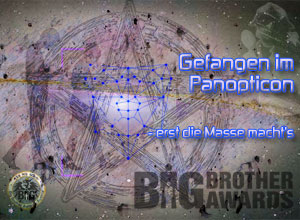

|
search / subscribe / upload / contact |
|
|
||
|
|
||
|
|
||
|
|
||
|
|
||
|
|
||
|
|
||
|
|
||
| RSS-Feed Depeschen | ||

|
||
Date: 1999-03-22
Linux: Vorwärts mit XML-.-. --.- -.-. --.- -.-. --.- -.-. --.- -.-. --.- -.-. --.- Netscape hat seine 5.0 Version, die XML unterstützen soll, noch nicht parat & jetzt kommt das unten ausgerissene Papier eines Linux-Strategen daher, das unverholen die Botschaft an die Gemeinde der Entwickler schickt: Wer am schnellsten & vollständigsten den angesagten neuen Dokumentenstandard XML unterstützt, gewinnt. Bis dato heisst der de facto Dokumentenstandard MS-Word. -.-. --.- -.-. --.- -.-. --.- -.-. --.- -.-. --.- -.-. --.- Uche Ogbuji The rise of the Internet was a flash flood ... Now that this pioneering boomtown is beginning show signs of chaos and unmanageability, the city planners have moved in on the scene and are quietly putting things in order. Their primary tool is XML, the Extensible Markup Language. XML itself is yet another markup language. It's a subset of SGML that allows the description and implementation of documents in a tag format familiar to anyone who reads HTML. ... The many XML-based proposals wending their way through standards bodies right now promise to revolutionize the way information is stored, retrieved, managed, and exchanged. This isn't due to any leap in technology. Few of the technologies advanced by the XML community are in themselves revolutionary. In fact, many of them are based on decades-old information processing models. The power of XML lies in the fact that so many vendors and users are finally agreeing on practical standards for such models. For this reason, XML might well be the ideal vehicle for boosting Linux in the enormous halls of enterprise information management. Among those looking to get in on the ground floor of the enterprise market is Microsoft. Having largely failed to capitalize on the Internet boom, Redmond is feverishly working to establish itself in the enterprise. And it's using XML. ... More than markup: Data formats and data exchange There are really two ways to look at XML. Its primary emphasis is the representation of documents. But its inherent tree structure and sophisticated support for element composition and attributes makes it a capable data definition language as well. These two areas lead to subtly different toolsets and supporting standards. For the XML exchange of documents, the primary tools needed are an intelligent viewer or browser (preferably one that supports style sheets) and an intelligent XML editor (preferably one that can guide the editing process according to a document type definition [DTD] and help develop style sheets). Linux is lacking in both areas. full text 4000 Zeichen http://www.linuxworld.com/linuxworld/lw-1999-03/lw-03-xml.html?IDG.net -.-. --.- -.-. --.- -.-. --.- -.-. --.- -.-. --.- -.-. --.- "There is no solution because there is no problem" Marcel Duchamp http://www.heimatseite.com/revamp-duchamp -.-. --.- -.-. --.- -.-. --.- -.-. --.- -.-. --.- -.-. --.- - -.-. --.- -.-. --.- -.-. --.- -.-. --.- -.-. --.- -.-. --.- edited by Harkank published on: 1999-03-22 comments to office@quintessenz.at subscribe Newsletter - -.-. --.- -.-. --.- -.-. --.- -.-. --.- -.-. --.- -.-. --.- |
|
|
|
| CURRENTLY RUNNING | |
q/Talk 1.Juli: The Danger of Software Users Don't Control

|
|
| !WATCH OUT! | |
bits4free 14.Juli 2011: OpenStreetMap Erfinder Steve Coast live in Wien

|
|

